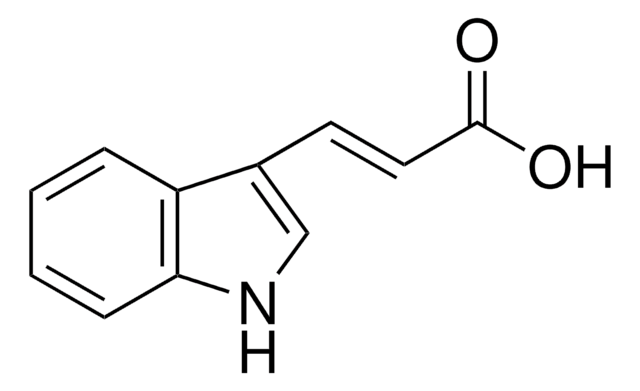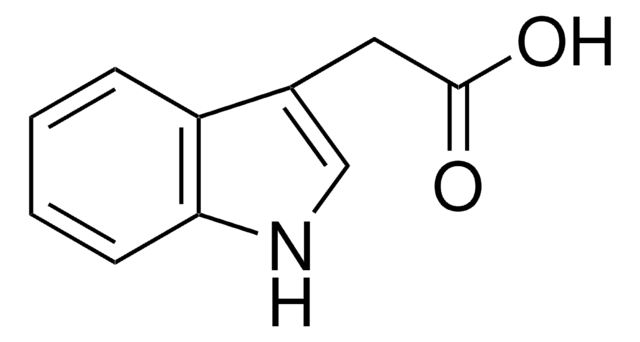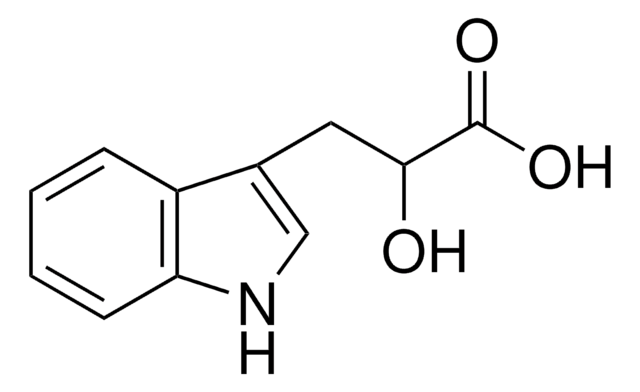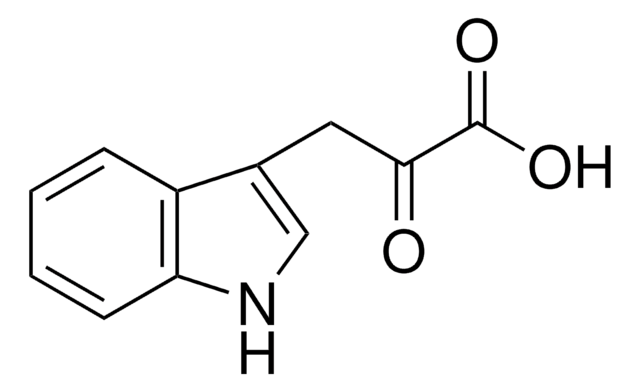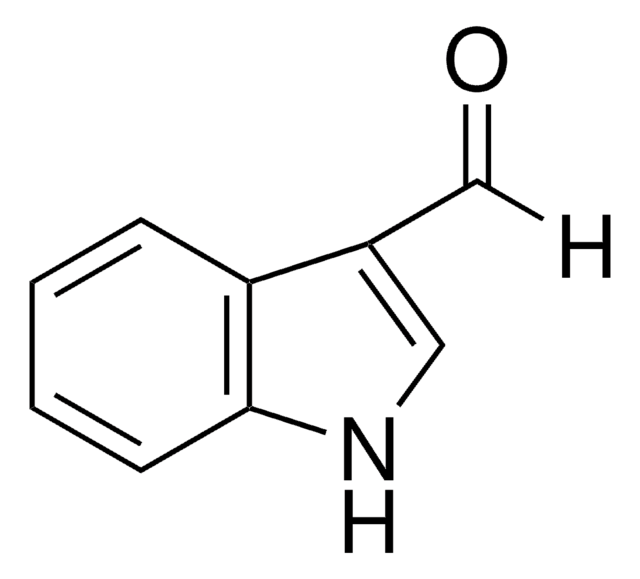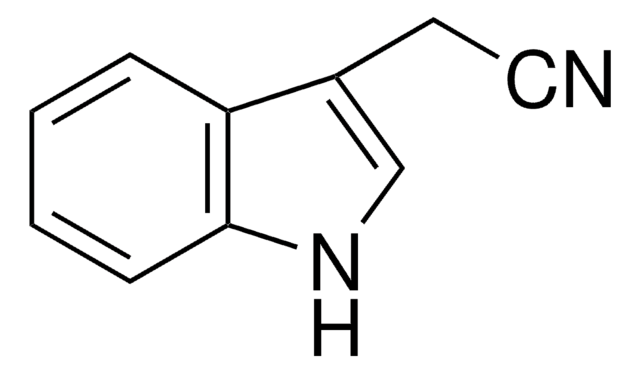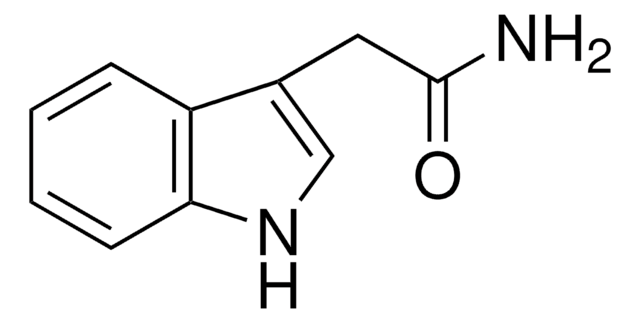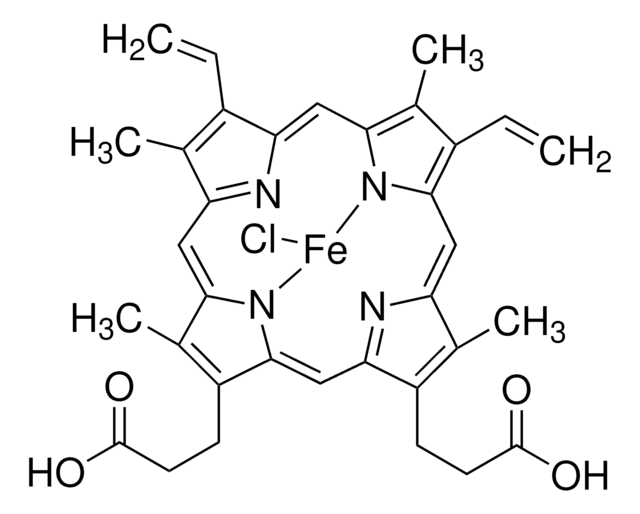I1625
3-Indoleacrylic acid
powder
Synonym(s):
3-(3-Indolyl)acrylic acid, IAA
Sign Into View Organizational & Contract Pricing
All Photos(1)
About This Item
Empirical Formula (Hill Notation):
C11H9NO2
CAS Number:
Molecular Weight:
187.19
Beilstein:
6317
EC Number:
MDL number:
UNSPSC Code:
12352106
PubChem Substance ID:
NACRES:
NA.52
Recommended Products
grade
for molecular biology
Quality Level
Assay
≥98.0% (HPLC)
≥98.0% (TLC)
form
powder
mol wt
187.19 g/mol
storage temp.
room temp
SMILES string
OC(=O)\C=C\c1c[nH]c2ccccc12
InChI
1S/C11H9NO2/c13-11(14)6-5-8-7-12-10-4-2-1-3-9(8)10/h1-7,12H,(H,13,14)/b6-5+
InChI key
PLVPPLCLBIEYEA-AATRIKPKSA-N
Looking for similar products? Visit Product Comparison Guide
General description
3-Indoleacrylic acid (IAA) is a chemical used for the induction of gene transcription. This expression system requires that the gene of interest is cloned in plasmids containing the trpE promoter.
Application
Suitable for induction of gene transcription in systems controlled by the trpE promoter.
Biochem/physiol Actions
3-Indoleacrylic acid helps to block the mycelial growth of Neurospora crassa. As a result, the cells accumulate indoleglycerol phosphate, which influences the rate of tryptophan synthetase.
related product
Product No.
Description
Pricing
Signal Word
Warning
Hazard Statements
Precautionary Statements
Hazard Classifications
Eye Irrit. 2 - Skin Irrit. 2 - STOT SE 3
Target Organs
Respiratory system
Storage Class Code
11 - Combustible Solids
WGK
WGK 3
Flash Point(F)
Not applicable
Flash Point(C)
Not applicable
Personal Protective Equipment
dust mask type N95 (US), Eyeshields, Gloves
Choose from one of the most recent versions:
Already Own This Product?
Find documentation for the products that you have recently purchased in the Document Library.
Inhibition of tryptophan synthetase by indoleacrylic acid
Matchett W H
Journal of Bacteriology, 110(1), 146-154 (1972)
D N Wilson et al.
RNA (New York, N.Y.), 6(12), 1704-1713 (2001-01-06)
Replacing a cassette of 31 residues from Escherichia coli release factor 1 with the equivalent residues in release factor 2 gave a protein active in codon-specific binding to the ribosome but inactive in peptidyl-tRNA hydrolysis. Such a phenotype is also
J K Johnson et al.
Biochemistry, 33(15), 4738-4744 (1994-04-19)
In a previous paper, we demonstrated that the medium-chain fatty acyl-CoA dehydrogenase-catalyzed (MCAD-catalyzed) reductive half-reaction of indolepropionyl-CoA proceeds via formation of a chromophoric intermediary species "X" (absorption maximum = 400 nm) and proposed that the decay of this species might
E Marklová
Amino acids, 17(4), 401-413 (2000-03-09)
In addition to the main catabolic routes of tryptophan (Trp), there exist minor and less thoroughly investigated pathways; one of these leads to indolylacrylic acid (IAcrA). IAcrA is a plant growth hormone, whereas its biological role in animals is still
S O Hwang et al.
Biotechnology progress, 6(1), 48-50 (1990-01-01)
An approach to the optimization of product yield in an inducible inclusion body-producing system is presented. Following induction by indoleacrylic acid (IAA) of a trpLE-HIVgp41 fusion protein, we found a large increase in culture turbidity and single-cell dry weight. After
Our team of scientists has experience in all areas of research including Life Science, Material Science, Chemical Synthesis, Chromatography, Analytical and many others.
Contact Technical Service